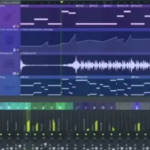It doesn’t matter what sector the company is in; businesses across industries have struggled to hire and retain their most talented workers. Companies can accomplish anything with the right talent in place.
However, that’s getting tougher lately. Thankfully, modern HR tools like job description software simplify and streamline processes from before an employee is hired to long after their tenure. Let’s check out how it works.
Better Job Descriptions in Less Time
HR professionals struggle to find the right words to capture the core of every position for which they’re hiring. It’s hard for them to have a deep understanding of every prerequisite for every job in companies with multiple divisions.
Meanwhile, in smaller companies, employees may be expected to be more agile and flexible. Pinning down the competencies, skills, and experiences needed to thrive is difficult in either case.
Using job description software with AI technology and distilled HR wisdom lets companies hire more effectively and in less time. Your HR personnel will have a database of job descriptions based on core competencies at their fingertips they can use out of the box or customize as needed.
Deeper Interview Questions
The core competencies at the heart of the job descriptions are also embedded in the software’s database of interview questions, so hiring is more effective, and companies can keep multiple processes consistent easily. The job descriptions are an excellent way to get the right candidate to the interview, and they continue to help once you’re face-to-face with them.
Leading job description software comes with over 1,000 competency-based interview questions. Managers, executives, and HR pros won’t have to trawl Google for the right lines of questioning. Spend less time getting to the heart of what really matters.
Hiring the right employee means you’ll waste less time, energy, and money on training and onboarding.
Employee Evaluation and Succession Planning
Finally, the competencies at the job description software’s heart play a crucial role in evaluating employee performance and mapping the future of the company. Doesn’t it make sense to assess employees based on the qualities the company needs and the ones for which they were hired?
Aligning the company’s needs to the employee’s skills, and making this the basis of their evaluation, is fair for everybody. The software also gives managers tangible, measurable goals to achieve so employees have clear targets to reach their next promotion. They’ll feel more in control of their career and personal finances, which can only increase their loyalty and help boost performance.
Meanwhile, companies can stitch together all their employees’ charts to see where the business is headed. Decisions about everything from the next campaign to the company’s future will be made on a sounder basis.
Modern tools like artificial intelligence are already changing how companies do business. Customer-facing AI tools like chatbots are one thing, but using AI to help assemble, retain, and assess the optimal employees lets businesses get a boost from people and technology.








